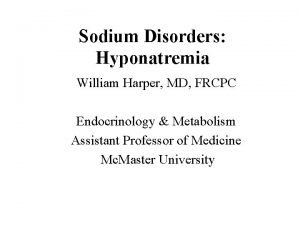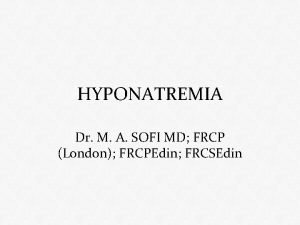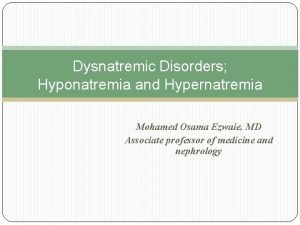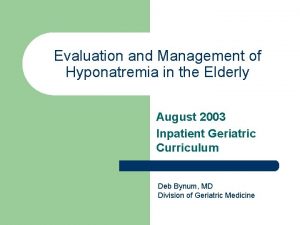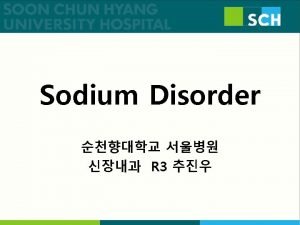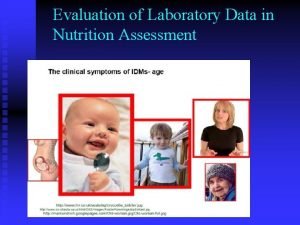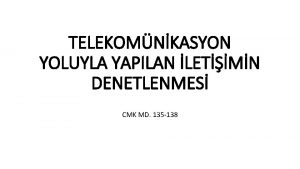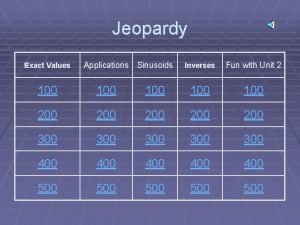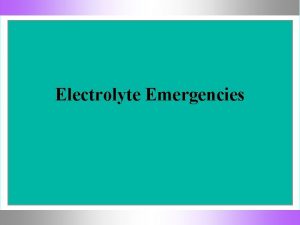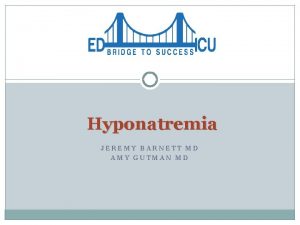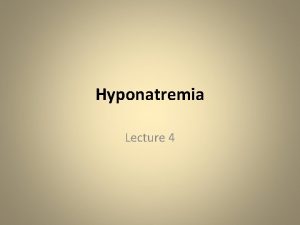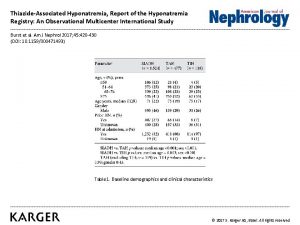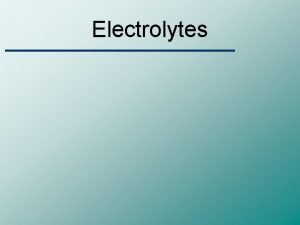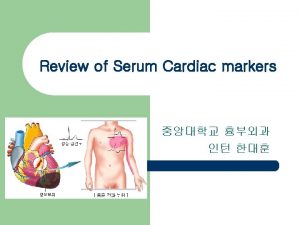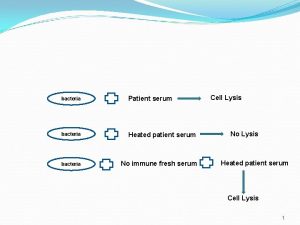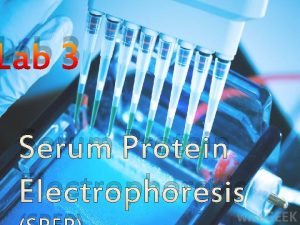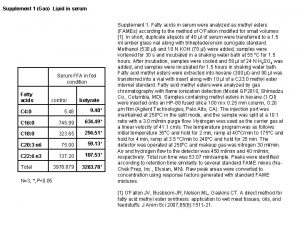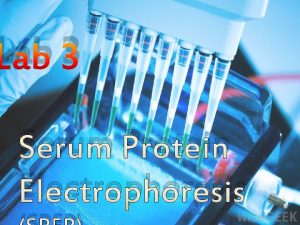Hyponatremia Definition Serum Na 135 meqL Serum Na

![Definition Serum [Na] < 135 meq/L • Serum [Na] < 135 meq/L - incidence Definition Serum [Na] < 135 meq/L • Serum [Na] < 135 meq/L - incidence](https://slidetodoc.com/presentation_image/e4aa7dc769545c5c71b5e7b8921b0aef/image-2.jpg)












- Slides: 14

Hyponatremia
![Definition Serum Na 135 meqL Serum Na 135 meqL incidence Definition Serum [Na] < 135 meq/L • Serum [Na] < 135 meq/L - incidence](https://slidetodoc.com/presentation_image/e4aa7dc769545c5c71b5e7b8921b0aef/image-2.jpg)
Definition Serum [Na] < 135 meq/L • Serum [Na] < 135 meq/L - incidence is 1%-4% • Serum [Na] < 130 meq/L - incidence is 15%-30% (represents a more appropriate level to define the occurrence of clinically significant cases)

Symptoms Most are asymptomatic Mild hyponatremia- headache, lethargy, nausea, vomiting Severe hyponatremia – confusion, seizures, respiratory arrest, neurological deficit, coma and death • usually none till Na <120 meq/L • risk of seizures and coma increases as the sodium level decreases. • also depends on the rapidity with which the Na decreases. • if rapid decrease, symptomatic even with Na >120 meq/L

Work up Serum Sodium Urine spot sodium Serum osmolality Urine osmolality CVP PCV

Causes Hyponatremia in neurosurgical patients • SIADH • CSW – COMMONEST CAUSE Hyponatremia with natriuresis

Diagnosis SIADH • low Na • high urinary Na • low serum osmolality • no signs of dehydration • Intravascular volume overload – “dilutional hyponatremia” CSW • low Na • very high urinary Na • normal or increased serum osmolality • signs of dehydration • Low intravascular volume

Management Cerebral salt wasting Treatment • Insert central line • Fluid correction: 0. 9% saline infusion 100 -125 ml per hour • Severe cases 3% saline 25 -50 ml per hour. • Oral salt 16 gm/day • Fludrocortisone 25 mcg QID

Management SIADH-routine treatment Indication Chronic hyponatremia and asymptomatic hyponatremia of unknown duration Treatment • Fluid restriction: 60% of previous 24 hrs output • Increased dietary salt • Medications: Demeclocycline; Vaptans (vasopressin receptor antagonists)

Management SIADH- intermediate treatment Indications 1. Symptomatic non severe hyponatremia 2. Severe hyponatremia with non specific symptoms and duration >48 hrs Treatment • 0. 9% saline infusion 100 ml/hr

Management SIADH - aggressive treatment Indications 1. Severe hyponatremia <125 meq/L 2. Severe symptoms (seizures or low GCS) Treatment • Admit in ICU • 3% saline infusion 0. 5 -2 ml/Kg body weight per hour • Not to raise >8 -10 meq/L in 24 hrs and 18 -25 meq/L in 48 hrs



Delayed hyponatremia • Seen in patients undergoing surgery for pituitary tumours • 5 to 14 days after surgery • Even in patients on steroid replacement • Cause - ? SIADH • Treatment – Salt replacement ? Fluid restriction Fludrocortisone

Complications of correction Osmotic demyelination syndrome (ODS) • central pontine myelinolysis • extra pontine myelinolysis High risk of ODS • Na<105 • hypokalemia • alcoholism • malnutrition • advanced liver disease Limits of Na correction not to exceed • high risk of ODS: 8 meq/L in 24 hr • normal risk of ODS: 10 -12 meq/L in 24 hr and 18 meq/L
 Serum osmolarity formula
Serum osmolarity formula Sodium correction in hyponatremia
Sodium correction in hyponatremia Dr sofi
Dr sofi Severe hyponatremia
Severe hyponatremia Management of hyponatremia
Management of hyponatremia Hyponatremia causes
Hyponatremia causes Hyponatremia approach
Hyponatremia approach Hyponatremia correction formula pdf
Hyponatremia correction formula pdf Hemoconcentration
Hemoconcentration Psalm 147 vers 6
Psalm 147 vers 6 Mobil telefonun yerinin tespiti cmk
Mobil telefonun yerinin tespiti cmk Faa ac 20-135
Faa ac 20-135 Hbu 112 uitm
Hbu 112 uitm Cmpt135
Cmpt135 Find the exact value sec(135)
Find the exact value sec(135)

